#highest mountain in mongolia
Text
aph kazakhstan hcs
kazakhstan!!! my starboy
- kazakhstan is the baby of the gang 👶 he looks like he's in his early 20s, a charming young man! he and his older sister uzbekistan were initially together under the uzbek khanate before breaking off and forming the kazakh khanate. to some extent, uzbekistan's still salty about it to this day...
- he may be the baby but he's the breadwinner of the family!! he has the highest gdp among all of central asia, and his other siblings are floored whenever they visit astana and almaty. he's a hustler!
- he tries to get his siblings to be cooperative and stop fighting all the time(specifically uzbekistan tajikistan and kyrgyzstan) through ~regional unity.~ the results? there certainly were some...
- kyrgyzstan and uzbekistan dote on him a lot while also being jealous of his massive economic gains lol
- kazakhstan is asexual. I see him immensely valuing his small group of friends and family, but I don't see him pursuing any relationships in an intimate manner. he may still have fleeting crushes from time to time, and so may be alloromantic to some extent.
- he gets along well with kyrgyzstan, his older brother, in terms of language! they both belong to the qipchak language family, and having both been nomadic for longer have restored a lot of nomadic tradition than the couch potato over there(uzbekistan).
- the qipchak languages have less persian influence than qarluk, so this means kazakhstan and kyrgyzstan(as well as karakalpakstan) don't have many issues speaking in their language towards turkey. they both know turkish fluently anyway.
- when they speak to tajikistan they revert to russian or have uzbekistan translate.
- he's also very close with uzbekistan, as mentioned before with them both being under the same roof once. kazakhs are quick to support uzbeks in times of need or celebration, like diyora keldiyorova's gold medal winning in judo(the first uzbek woman to win in judo)! kazakhstan admires how hard working, mannered and thoughtful she is towards the people she loves and cares about, and even towards strangers as well! he also loves her cooking, and in the meantime uzbeks admire how outspoken kazakhs are, and how quick they are to fight against injustice. uzbekistan wishes she could be as outspoken as her brothers too, to forcefully enact change instead of waiting in fear...
- also she loves her lil bro's chocolate and candy!! bayan sulu my beloved...
- @ any kazakhs who see this...I KNOW there was a chocolate with lemon filling I just don't remember the brand name...PLEASE DM me if you know 😭😭
- uzbekistan also has the 2nd biggest gdp of central asia. the 2 hustle together to be the faces of central asia!
- whenever he tries taking her out to skate she clings onto him for dear life while screaming. he tries taking her on hikes too because "the mountain air is good for your health" but she INSISTS a lady shouldn't exert herself too much...once you become sedentary it's over for you ig 💀
- mongolia is closest to kazakhstan out of all the central asians! they're neighbors, and in bayan ulgii, there's a sizeable community of kazakhs that have lived there since fleeing the russian occupation. they've kept all their traditions intact, and kazakhstan pays them a visit from time to time! he's grateful to mongolia for letting them seek refuge and keep their culture intact after all these years.
- kazakhstan was a successor to the golden horde, and a lot of kazakhs can trace their ancestry to then! hence, mongolia is something like.. a grandpa...?
- mongolia takes the time to tease kazakhstan like "hey isn't it past your bedtime little man?" just to see kazakhstan go all red in the face. mongolia also checks on him from time to time to see if he's doing alright. it's kind of sweet tbh 🥺
- this one time in a horseback archery competition france came in FIRST??? while mongolia and kazakhstan came in 2nd and 3rd. they probably sobbed abt it and drank together 😭
- now all the central asians use some russian words when speaking, but kazakhstan does this the most. he's trying(successfully) to phase russian out when he could use a kazakh word in place of it.
- kazakhstan has kept the tradition of falcon taming and hunting! he handles falcons really well, and will sometimes be on the tv as he walks the audience through handling a falcon. kazakhstan also rides horses the best! there's a lot of mountainous regions an hour or two's drive away from almaty where you can ride horses and admire the freshwater streams and the vibrant green grass...what a dream..
- kyrgyzstan and kazakhstan were also one of the founding members of the turkic union! for the first few years it must have been hard to listen to turkey yap about turan...
- kazakhstan is also the coldest central asian country. the weather can hit as low -30 to -35 degrees! before washing machines, he'd hang his laundry outside and check on them the next morning to try and fit a stiff scarf through the doorway. when roads freeze over, he pulls out his skates and simply skates to work. he'd open his door in the morning after a snowy night only for the snow to have taken the shape of the door.
- uzbekistan may be the best cook as declared by her siblings, but kazakhstan is a close second and this is because of his beshbarmaq and baursak. it is such a banger and hits EVERY TIME. uzbekistan loves his cooking ❤️
- also makes a mean kazy! bro is NOT lazy with it. he doesn't buy from the store! not when he could make his own.
- he also makes qurut as well. qurut is like dried yogurt in the shape of a ball, and you suck on it because mm salty. thing is, uzbekistan's qurut is much harder and therefore takes a longer time to go through compared to kazakhstan's! his is softer and more creamy, less salty, and it gets my vote <3
- he loves playing hockey, skating, riding horses, hiking in his mountainous ranges...he's very active! he also likes going to concerts and raves, and coming home late lol
- his interest in space was kickstarted by uzbekistan, who took him to see ulughbek's observatory. then years later a major space operations hub was placed in baikonur during the ussr period, and since then he's developed his own space program and he loves keeping up to date with space related news! just say the word and he'll explain it to you!
- due to constantly being tormented by russia, and for a while having to bend to his needs(a long while...) he does have unhealthy coping mechanisms. he picked up drinking and smoking during the ussr and still does it, though his siblings are trying to get him to cut down on it.
- he, like all the central asians, absolutely DESPISES russia. he can just conceal his feelings better than his siblings when he makes economic deals. this was especially so in the early aughts to 2010s as he insisted it was "all for my economy's sake..."
- when he's working on something late at night, he likes going to CU to grab a bite to eat! korea's been to his CU a few times when he's showed her around and she noticed how there were some products that weren't in korea themselves! CU regularly sells binggrae vanilla flavored milk, though in korea it's not on the shelves at all!
- this one time in 2022 the power shut off in uzbekistan kazakhstan and kyrgyzstan, and all the governments blamed each other lol. talk about the spiderman meme
- also in my opinion...kazakhstan has the best drip lol. both in terms of tradition and modern fits I see people wear in the streets of astana
#hetalia#aph kazakhstan#hws kazakhstan#tokki writes#kazakhstan!! i love you!!#i should draw him also...#a lot of these hcs were based after my uzbek-kazakh mom and her family!!#most of these were uzbkazkyrgyz relationship hcs because kazakhstan has stronger bonds with them over tajik and turkmen..😭
17 notes
·
View notes
Text
ok just gonna jot down a few numbers so I don't have to look them all up again:
According to that one esteemed reddit scholar, Xadia (the continent) is about the size of Mongolia. I don't feel like repeating their work so I'm just going to take that as fact. However, I do think their population distribution estimates for the human kingdoms are off-base, so I'm going to do my own.
Based on populations of medieval England/Wales and France, I'm going to say 4 million as a nice round number for an area the size of England/Wales. Middle ages population numbers are goofy because of the persistent plague outbreaks, so we basically have to make this number up. It's okay, even if we doubled it, the outcome wouldn't be super different.
Mongolia is about 6 times the size of the UK. England/Wales accounts for about 2/3 of the UK's area, so Xadia is about 9 times the size of England/Wales. Divide that in half for the human kingdoms and we have an area 4.5 times the size of England/Wales with an estimated population of 18 million. (Actually not too far off from reddit scholar's 20 million, which they based off the HRE.)
Reddit scholar puts 80% of the human kingdoms' population in Katolis and Duren, which I think is overestimating. Since 18 is nicely divisible into 3, let's say 2/3 of the population is in those kingdoms, and 1/3 is spread across Evenere, Neolandia, and Del Bar (mostly Del Bar, as the only kingdom on the map with TWO cities).
The balance of that 12 million population between Katolis and Duren is tricky, since Katolis looks like it has larger area BUT more of it is severely mountainous and probably not heavily populated. So let's make it easy and just go 50-50. They each have 6 million.
100,000 people out of 6 million is about 1.7% of the population. That's kind of hard to visualize, so let's make it 1,667 deaths per 100,000, which is a pretty standard way of measuring death rates.
So what matches up to a one-year 1,667/100,000 death rate? Well, the total COVID-19 death rate in the US for 2021 (the highest) was 116/100,000. So... like fourteen times that? The only comparable number I found was the US COVID-19 death rate for people over the age of 85, which was 1,843 in 2020 and 1,593 in 2021. And I believe those numbers are age-adjusted, so basically of 100,000 people over the age of 85 who would otherwise not have died in 2020, 1,843 of them died of causes related to COVID-19.
Even if we halve that to split it between Katolis and Duren, you've got a death rate seven times that of the worst year of COVID-19 in the US. They're long, infrastructure-taxing deaths, too—not in the same way as COVID-19, but probably actually worse in terms of resource hoarding and potential escalation of hostility.
Now, the 100,000 deaths estimate could have been not an exaggeration, exactly, but a mathematical statement of "we have enough for the rest of our population to eat a normal amount, if 100,000 people get nothing (while if resources were spread out, everyone would be hungry but fewer people would die)." Which is dramatic, rather than practical, but it's a dramatic moment. If it's not, and 100,000 deaths is estimated from a standpoint of everyone already eating a lot less... well, big oof. I would not doubt that being more than enough pressure to topple a kingdom or two.
#the dragon prince#neither crows nor eagles au#i wanted to be sure lissa wasn't being dramatic like 'uh this could be literally the end of human civilization as we know it'#and she's really not#kradogsmeta
7 notes
·
View notes
Text
MONGOLIA
DAY ONE
To get to Mongolia from the US, you have to have a layover. The layovers are usually in Seoul, Beijing, Moscow, or Istanbul. Many people land in one of those 4 cities and then take the train to Mongolia. You do not need a visa if you are visiting for less than 90 days, but you must have a valid passport. When packing for Mongolia, make sure to bring breathable and clothes for the warm weather. The climate in Mongolia is high, cold, and dry, with the average summer temperature being 50° to 80 °F, and the winter being 32 °F.
The place I decided to stay in Mongolia was a Ger in Ulaanbaatar. This place is a collection of gers, each acting as a different room in a house. You share the living room, kitchen, and bathroom with your host, Oyuntsetseg. It costs $68 USD a night, but since Mongolia uses the Mongolian Tugrik (MNT ₮), it cost 231,018.54 ₮ a night. I spent 2 nights, so it ended up being 461,956.05 ₮. Oyuntsetseg accompanies her guests to the markets and into town, and she even makes you food. People said that Oyuntsetseg was very nice, but it was difficult to talk to her because she mainly spoke Khalkha Mongolian (main language of Mongolia), and not a lot of English.
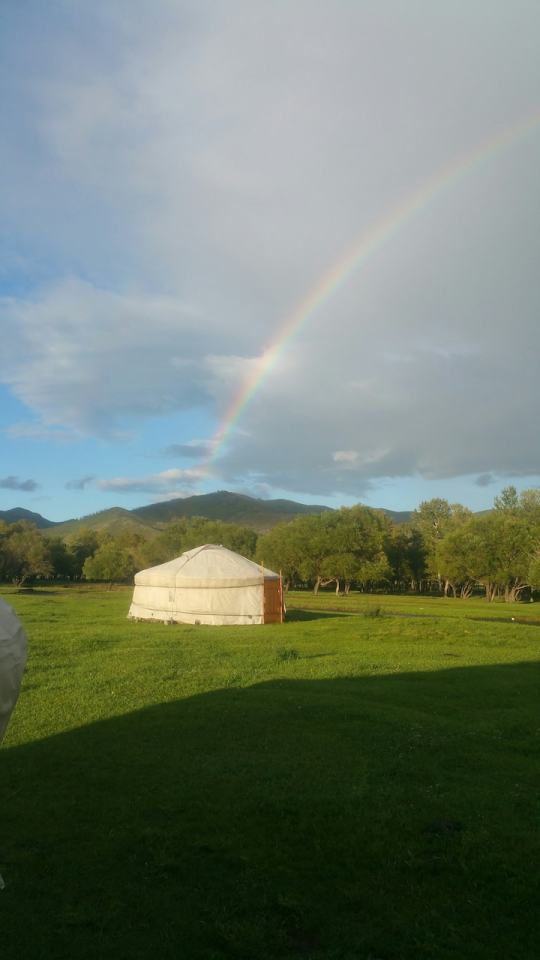
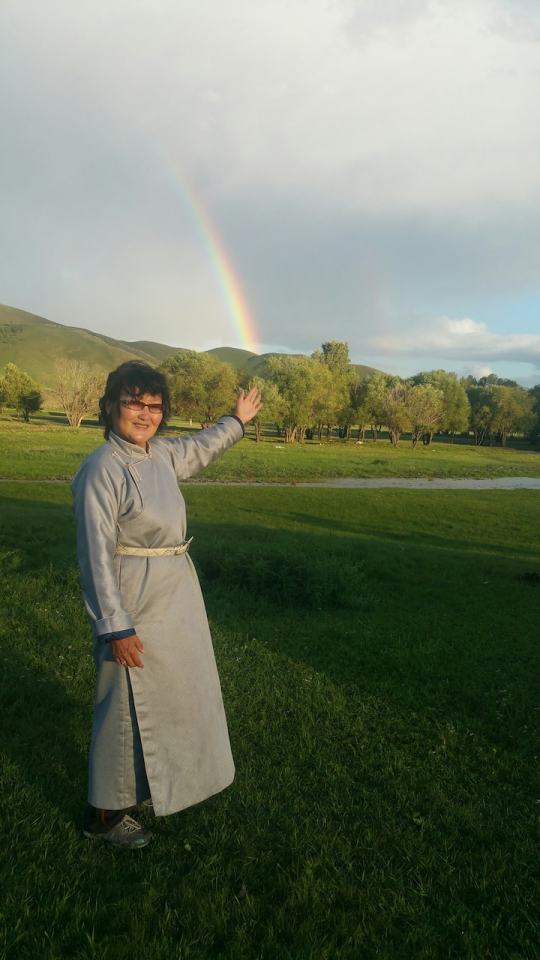

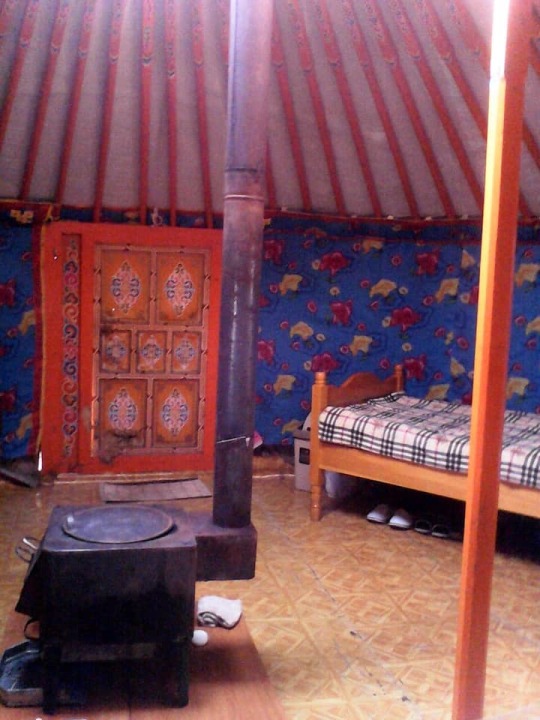
After settling into my ger, Oyuntsetseg said she had to make me food, so she made me the cuisine that Mongolia is known for. Buuz. Buuz is a Tibetan-style dumpling. Inside the dumpling is either minced lamb, mutton, or beef, and it is flavored with onion or garlic. Some people make it with sprouted fennel seeds as well. Oyuntsetseg made my buuz with mutton inside, since that is her specialty. The buuz was served with rice and cabbage. For dessert, Oyuntsetseg makes her guests Boortsog which is a fried dough pastry, and it is the most common cookie in Mongolia.


Since I was in the capital of Mongolia, Ulaanbaatar, I could do a lot of things. Ulaanbaatar has a population of 1.5 million, which is about half of Mongolia's population of 3.3 million. My ger was only an hour train ride away from the main city of Ulaanbaatar.
The first thing I did in Mongolia was visit The Fine Arts Zanabazar Musuem. Admissions for the museum is 15,000 ₮ ($4.43). Their upcoming exhibition is “Airag Feast” which is named after a painting made in 1995, originally painted by B. Sharav and about the resolutions of the Mongolian government. The exhibition features the actual painting, along with photographs, 2D animation, and other paintings are influenced by the original piece of art.



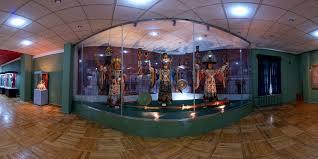
After visiting the museum, I went to Genghis Statue & Gorkhi-Terelj National Park with Oyuntsetseg. The reasoning behind the statue of Genghis Khan is because Mongolians recognize him as their founding father, and without him, Mongolia would not exist. His statue is 130 feet tall and made of stainless steel. The statue points east towards his birthplace. You can go inside the horse that Genghis Khan is riding in the statue. Nearby the statue is Gorkhi-Terelj National Park. The highest point in the park is Avkhan Mountain which is 2664 meters tall.
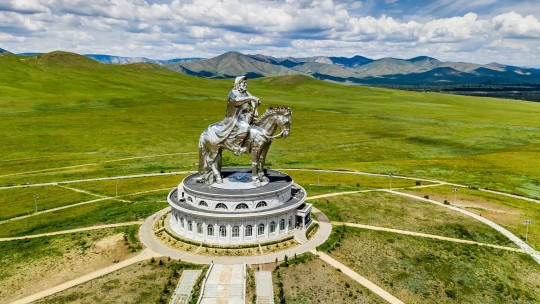
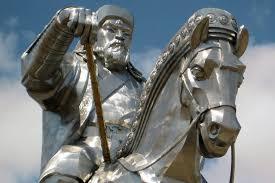
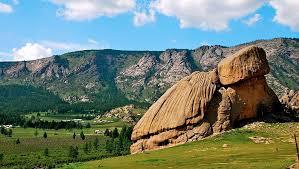

DAY TWO
In Mongolia, Buddhism is the majority religion, with 51.7% of their population practicing. Their second-biggest group is nonreligious people, that percentage being 40.6%. And finally, their third biggest is Islam, with a percentage of 3.2%. Buddhism first arrived in Mongolia in the 2nd century BC, but it became widespread in the 16th century.
I decided to look at Buddhist temples in Ulaanbaatar today. I stopped at Gandantegchinlen Monastery. The temple was founded in 1809, and between 1944 and 1989, it was the only active monastery in Mongolia. Today it is the center of Buddhism in Mongolia, there are more than 100 resident monks. In the temple, there is an 85-foot statue of Avalokiteśvara (who is a tenth-level bodhisattva) made of gilded bronze. The name Gandantegchinlen is a Tibetan word for “complete rejoicing.”


After the temple, I went to Lake Khövsgöl, which is the largest freshwater lake in Mongolia based on volume. Second-largest by ares after Uvs Lake. I had to fly in from Ulaanbaartar to Mörön to get to the lake. The lake is named Huvsgul in English texts, and Далай ээж in Mongolian text, which means 'Ocean Mother.' The lake is 5,397 feet above sea leave, 85 miles long, and 860 feet deep. Lake Khövsgöl holds 70% of the freshwater of Mongolia, and 0.4% of the freshwater in the world. I don't know if that is a large amount or not. You can get a tour of the lake, but only if you were staying at one of the cabins or gers located along the water. The water is very calm, so many people like to go sailing or kayaking. There is a good deal of wildlife around Lake Khövsgöl, including, ibex, argali, elk, wolf, wolverine, musk deer, brown bear, Siberian moose, and sable.

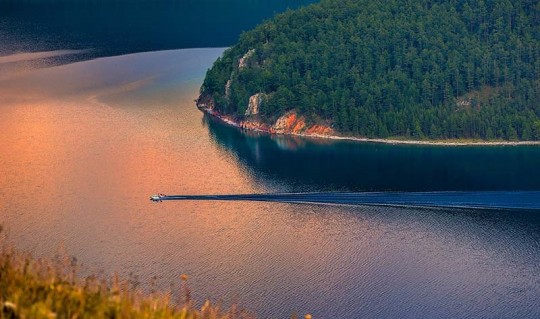
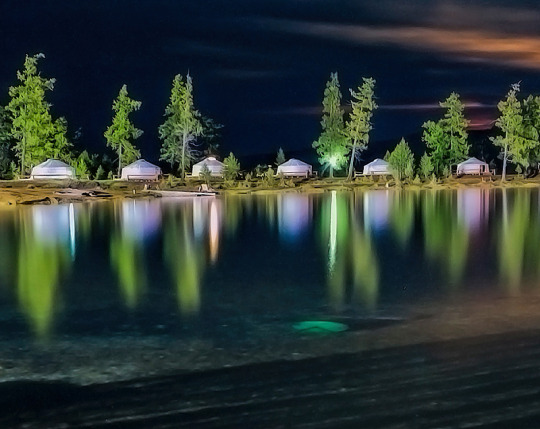
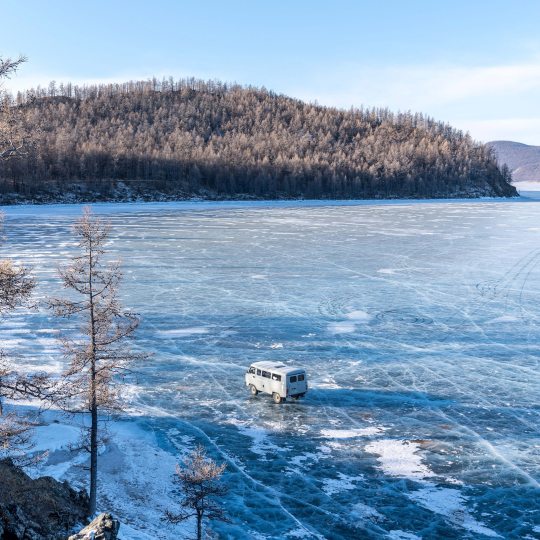
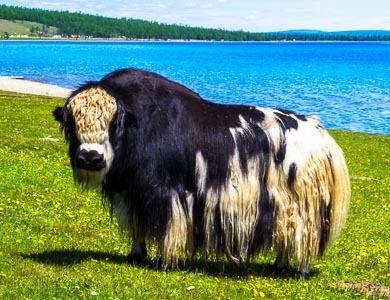
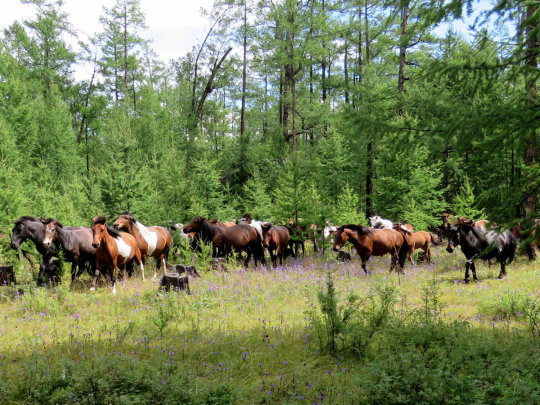
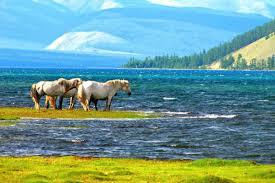

DAY THREE
I am leaving Mongolia today. I enjoyed my time here. Mongolia is full of culture and beautiful scenery. I also loved Oyuntsetseg and I will forever miss her. I am glad that Mongolia isn't like a super touristy place, so I didn't have to go to all these little stupid shops with expensive stuff. The climate here was amazing, it was like Minnesota but better. Let's see if the Philippines competes with this amazing experience.
3 notes
·
View notes
Text
October 26th (to 29th) 1872: on board of the Rangoon
The “Rangoon”—one of the Peninsular and Oriental Company’s boats plying in the Chinese and Japanese seas—was a screw steamer, built of iron, weighing about seventeen hundred and seventy tons, and with engines of four hundred horse-power. She was as fast, but not as well fitted up, as the “Mongolia,” and Aouda was not as comfortably provided for on board of her as Phileas Fogg could have wished. However, the trip from Calcutta to Hong Kong only comprised some three thousand five hundred miles, occupying from ten to twelve days, and the young woman was not difficult to please.
During the first days of the journey Aouda became better acquainted with her protector, and constantly gave evidence of her deep gratitude for what he had done. The phlegmatic gentleman listened to her, apparently at least, with coldness, neither his voice nor his manner betraying the slightest emotion; but he seemed to be always on the watch that nothing should be wanting to Aouda’s comfort. He visited her regularly each day at certain hours, not so much to talk himself, as to sit and hear her talk. He treated her with the strictest politeness, but with the precision of an automaton, the movements of which had been arranged for this purpose. Aouda did not quite know what to make of him, though Passepartout had given her some hints of his master’s eccentricity, and made her smile by telling her of the wager which was sending him round the world. After all, she owed Phileas Fogg her life, and she always regarded him through the exalting medium of her gratitude.
Aouda confirmed the Parsee guide’s narrative of her touching history. She did, indeed, belong to the highest of the native races of India. Many of the Parsee merchants have made great fortunes there by dealing in cotton; and one of them, Sir Jametsee Jeejeebhoy, was made a baronet by the English government. Aouda was a relative of this great man, and it was his cousin, Jeejeeh, whom she hoped to join at Hong Kong. Whether she would find a protector in him she could not tell; but Mr. Fogg essayed to calm her anxieties, and to assure her that everything would be mathematically—he used the very word—arranged. Aouda fastened her great eyes, “clear as the sacred lakes of the Himalaya,” upon him; but the intractable Fogg, as reserved as ever, did not seem at all inclined to throw himself into this lake.
The first few days of the voyage passed prosperously, amid favourable weather and propitious winds, and they soon came in sight of the great Andaman, the principal of the islands in the Bay of Bengal, with its picturesque Saddle Peak, two thousand four hundred feet high, looming above the waters. The steamer passed along near the shores, but the savage Papuans, who are in the lowest scale of humanity, but are not, as has been asserted, cannibals, did not make their appearance.
The panorama of the islands, as they steamed by them, was superb. Vast forests of palms, arecs, bamboo, teakwood, of the gigantic mimosa, and tree-like ferns covered the foreground, while behind, the graceful outlines of the mountains were traced against the sky; and along the coasts swarmed by thousands the precious swallows whose nests furnish a luxurious dish to the tables of the Celestial Empire. The varied landscape afforded by the Andaman Islands was soon passed, however, and the “Rangoon” rapidly approached the Straits of Malacca, which gave access to the China seas.
What was detective Fix, so unluckily drawn on from country to country, doing all this while? He had managed to embark on the “Rangoon” at Calcutta without being seen by Passepartout, after leaving orders that, if the warrant should arrive, it should be forwarded to him at Hong Kong; and he hoped to conceal his presence to the end of the voyage. It would have been difficult to explain why he was on board without awakening Passepartout’s suspicions, who thought him still at Bombay. But necessity impelled him, nevertheless, to renew his acquaintance with the worthy servant, as will be seen.
All the detective’s hopes and wishes were now centred on Hong Kong; for the steamer’s stay at Singapore would be too brief to enable him to take any steps there. The arrest must be made at Hong Kong, or the robber would probably escape him for ever. Hong Kong was the last English ground on which he would set foot; beyond, China, Japan, America offered to Fogg an almost certain refuge. If the warrant should at last make its appearance at Hong Kong, Fix could arrest him and give him into the hands of the local police, and there would be no further trouble. But beyond Hong Kong, a simple warrant would be of no avail; an extradition warrant would be necessary, and that would result in delays and obstacles, of which the rascal would take advantage to elude justice.
Fix thought over these probabilities during the long hours which he spent in his cabin, and kept repeating to himself, “Now, either the warrant will be at Hong Kong, in which case I shall arrest my man, or it will not be there; and this time it is absolutely necessary that I should delay his departure. I have failed at Bombay, and I have failed at Calcutta; if I fail at Hong Kong, my reputation is lost: Cost what it may, I must succeed! But how shall I prevent his departure, if that should turn out to be my last resource?”
Fix made up his mind that, if worst came to worst, he would make a confidant of Passepartout, and tell him what kind of a fellow his master really was. That Passepartout was not Fogg’s accomplice, he was very certain. The servant, enlightened by his disclosure, and afraid of being himself implicated in the crime, would doubtless become an ally of the detective. But this method was a dangerous one, only to be employed when everything else had failed. A word from Passepartout to his master would ruin all. The detective was therefore in a sore strait. But suddenly a new idea struck him. The presence of Aouda on the “Rangoon,” in company with Phileas Fogg, gave him new material for reflection.
Who was this woman? What combination of events had made her Fogg’s travelling companion? They had evidently met somewhere between Bombay and Calcutta; but where? Had they met accidentally, or had Fogg gone into the interior purposely in quest of this charming damsel? Fix was fairly puzzled. He asked himself whether there had not been a wicked elopement; and this idea so impressed itself upon his mind that he determined to make use of the supposed intrigue. Whether the young woman were married or not, he would be able to create such difficulties for Mr. Fogg at Hong Kong that he could not escape by paying any amount of money.
But could he even wait till they reached Hong Kong? Fogg had an abominable way of jumping from one boat to another, and, before anything could be effected, might get full under way again for Yokohama.
Fix decided that he must warn the English authorities, and signal the “Rangoon” before her arrival. This was easy to do, since the steamer stopped at Singapore, whence there is a telegraphic wire to Hong Kong. He finally resolved, moreover, before acting more positively, to question Passepartout. It would not be difficult to make him talk; and, as there was no time to lose, Fix prepared to make himself known.
20 notes
·
View notes
Text
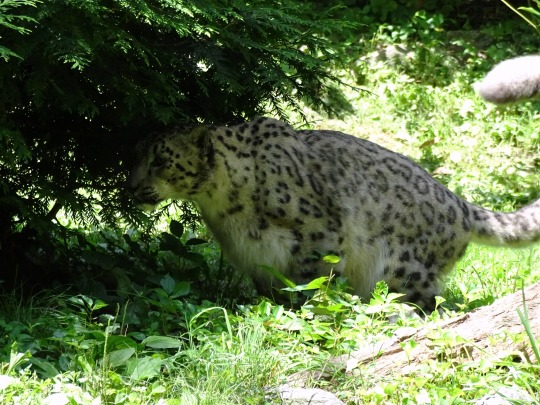
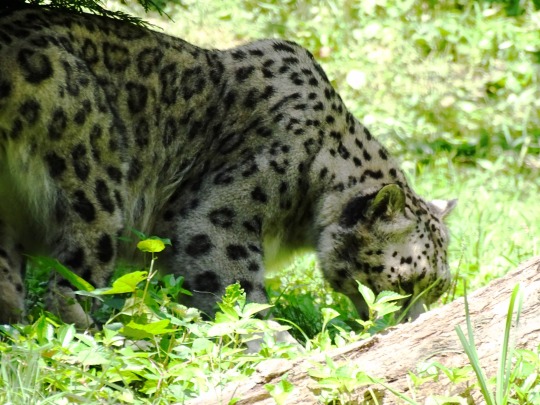
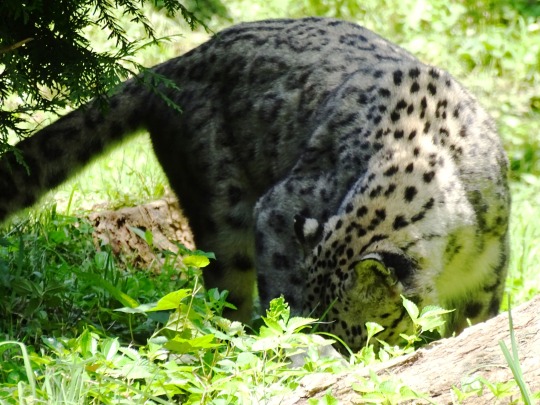

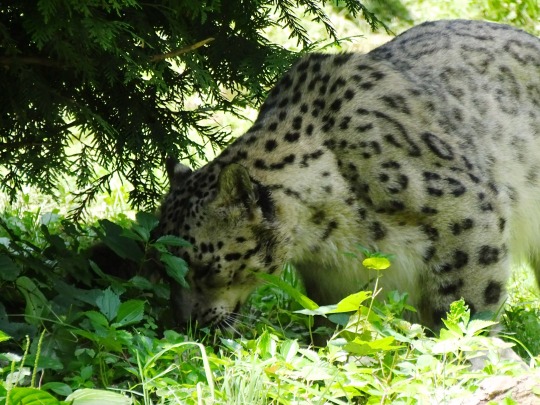



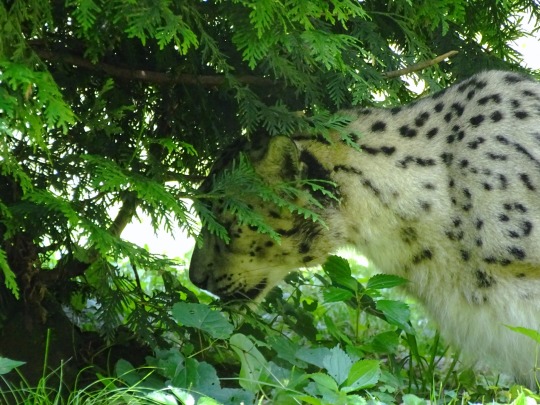

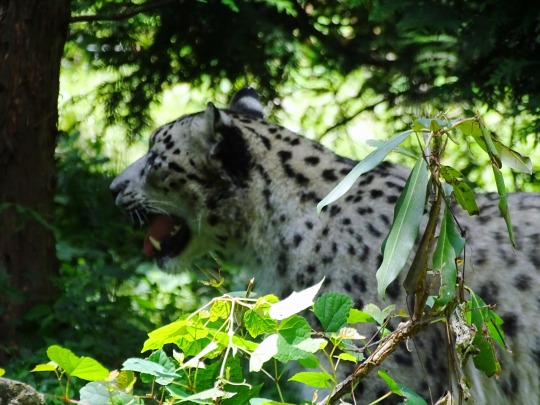




International Snow Leopard Day
Snow Leopards are captivating and powerful animals. However, they are also vulnerable to loss of prey and poaching. These animals are distributed sparsely across 12 different countries in Central Asia. They tend to be found in rugged, high mountain landscapes, at elevations between 3,000 and 4,500m. The key to protecting this species is raising awareness. That’s what International Snow Leopard Day is all about.
History Of International Snow Leopard Day
The first International Snow Leopard Day occurred on the 23rd of October in 2014. The main purpose of this day is to show the importance of snow leopard conservation and raise awareness about this incredible animal. The day also emphasizes the importance of taking measures to stop poaching, as well as consolidating efforts in terms of an environmental organization in the countries of the snow leopard range.
The day was initiated by the countries that encompass the snow leopard’s range. They include Uzbekistan, Tajikistan, Russia, Pakistan, Mongolia, Kyrgyzstan, Kazakhstan, India, China, Bhutan, and Afganistan. On the 23rd of October, in 2013, these countries signed the Bishkek Declaration regarding the conservation of the snow leopard. This happened in the capital of Kyrgyzstan, Bishkek, at the very first Global Snow Leopard Forum.
Fascinating Facts About Snow Leopards
Snow leopards are able to prey on animals that are up to three times their own body weight.
They have massive, thick tails, which are able to help them maintain balance and shield them from harsh weather. Their tails are almost as long as their entire body.
A study from the WWF has recorded snow leopards living at 5,859 meters above sea level. This is the highest altitude that has ever been documented for big cats. This is about the same height as the highest mountain in Canada.
You may be surprised to learn that snow leopards are not able to roar. Instead, they mew, yowl, and growl. They also prusten, which is also known as chuffing. This is a non-threatening vocalization, which is made when they blow air through their nose.
The fur on the stomach of a snow leopard is almost five inches thick. This is so that they can survive in the harsh and cold mountain climates.
These animals are often referred to as ‘ghosts of the mountain’ because they spend most of their lives in solitude and they are rarely seen.
Snow leopards are the only big cats that call Asia’s cold deserts their home. These deserts are sometimes referred to as the third pole because they feature ice fields with the biggest reserves of freshwater outside of the southern and northern polar regions.
What Threats Do Snow Leopards Face?
The exact number of snow leopards is unknown. Experts believe that there is no more than 6,390 snow leopards around the world, yet the number could be as small as 3,920. There are a number of threats that this elusive cat faces, including poaching. Data is hard to come by in this respect because a lot of trades with snow leopard parts occur in the dark. Some research shows that one snow leopard has been killed and traded every day between 2008 and 2016. However, the true extent of the issue is thought to be even bigger.
No animal should be poached, and this is why the likes of International Snow Leopard Day are so important so that we can raise awareness about the issue. Poaching is also a problem because it takes away resources for the snow leopard. The main prey species for the snow leopard are wild goat and sheep. However, these species are also threatened by unsustainable or illegal hunting in a lot of the parts of the snow leopard range. So, if there is a decline in their populations, there is also going to be a decline in the population of the snow leopard.
Snow leopards face a number of other threats that a lot of people don’t consider. For example, their mountain ecosystem could be destroyed because of large-scale developments, including mining. Climate change also poses a number of challenges as well. Temperatures are increasing in the mountains across Central Asia. This has an impact on the entire ecosystem; from water supplies to vegetation. It is certainly worrying times for snow leopards, and a good way to spend International Snow Leopard Day is by educating yourself fully on the issues these animals face.
How To Observe International Snow Leopard Day
There are a number of different ways that you can support International Snow Leopard Day. So, here are some suggestions…
Learn and explore – One of the best ways to observe International Snow Leopard Day is to learn about this incredible creature. Spend some time reading up on the snow leopard. Find out about where the animal lives, what threats they face, and what steps we can take in order to help safeguard the future of this incredible animal.
Get creative – Another way to show your support is to get creative. There are some activities online involving the snow leopard. You can find a fun activity sheet via the WWF website.
Order a WWF Explore Badge – Another way to show your support for International Snow Leopard Day is to order a WWF Badge. This is something else that you can get on the WWF website.
Adopt a snow leopard – You can also support snow leopards by adopting one. This helps the WWF to monitor snow leopard movements, by giving local communities the support needed to do this, as well as reducing human snow leopard conflicts.
Fundraise – You may also decide to host a fundraising event. This is a great way to raise awareness about the problems that snow leopards face while also accumulating donations that can go towards helping them. There are so many different ways that you can fundraise. You may decide to host a fundraising event, such as a cook-off, bake sale, or fun run. Another option is to make products that you can sell and then you could donate the proceeds or a percentage of them to helping snow leopards.
Source
#International Snow Leopard Day#23 October#Bronx Zoo#New York City#USA#summer 2019#original photography#InternationalSnowLeopardDay#outdoors#animal#flora#fauna#shy animal#tourist attraction#landmark#cityscape#nature#vacation#travel#world day#Zolli#Zoo Basel#Switzerland#Schweiz
5 notes
·
View notes
Photo

Altai Tavan Bogd mountain massif in Mongolia near the triple border with China and Russia. Its highest peak, the Khüiten Peak, is the highest point in Mongolia at 4374 meters above sea level.
photo by legendary Erdenebulgan
5 notes
·
View notes
Link
0 notes
Text
Beyond the Ordinary: A Journey Through Lesser-Known Travel Treasures
In an age where popular tourist spots are increasingly crowded, the allure of exploring lesser-known destinations grows stronger. These hidden corners of the world offer tranquility away from the masses and a chance to experience unspoiled beauty and unique cultures. This comprehensive guide will take you through some of the world's most underrated yet captivating travel destinations.
The Azores, Portugal
Far in the North Atlantic, the Azores are a cluster of nine islands, each with unique charm. São Miguel, known as the "Green Island," is a haven of geothermal wonders and lush landscapes. Terceira boasts a rich history, evident in its colorful old town, Angra do Heroísmo. For adventure seekers, Pico's mountainous terrain offers exhilarating climbing and hiking opportunities.
Luang Prabang, Laos
This ancient city in Laos, a UNESCO World Heritage Site, blends traditional Lao wooden houses and European colonial architecture. Visitors can experience spiritual awakening by participating in the morning alms-giving ritual with Buddhist monks, exploring the royal palace, and enjoying the tranquility of the Mekong River.
The Faroe Islands, Denmark
Situated between Iceland and Norway, the Faroe Islands are a group of 18 volcanic islands characterized by cliffs, tall mountains, and narrow fjords. The islands are a birdwatcher's paradise, home to puffins and other sea birds. The unique Faroese culture, with its language and traditions, adds to the charm of this remote destination.
Salta, Argentina
Salta, in Argentina's northwest, is a region of diverse landscapes, from the high-altitude vineyards of Cafayate to the salt flats of Salinas Grandes. Salta offers a well-preserved colonial center, vibrant local markets, and a rich culinary scene. The nearby Quebrada de Humahuaca, a UNESCO World Heritage Site, is a valley with stunning multicolored rock formations.
The Gobi Desert, Mongolia
The Gobi Desert in Mongolia is a vast and varied landscape offering more than dunes. Visitors can explore the dramatic "singing" dunes of Khongoryn Els, visit ancient monasteries, and discover dinosaur fossils at the Flaming Cliffs. Staying with nomadic families in traditional gers provides a glimpse into a way of life unchanged for centuries.
Raja Ampat, Indonesia
Raja Ampat, located in the Coral Triangle, is renowned for its incredible underwater biodiversity. It's a diver's paradise, with vibrant coral reefs, manta rays, and many fish species. Above water, the islands are just as stunning, with lush rainforests, hidden lagoons, and picturesque beaches.
The Scottish Highlands
The Scottish Highlands are a land of myths and legends, with stunning landscapes that include Ben Nevis, the UK's highest mountain, and the mysterious Loch Ness. The region's rich history is reflected in its castles and battlefields, while its cultural heritage can be experienced through Gaelic language and music.
Bhutan
Nestled in the Himalayas, Bhutan is a Buddhist kingdom that measures its success by Gross National Happiness rather than GDP. Trekking in Bhutan offers breathtaking views and the opportunity to visit remote monasteries like the iconic Paro Taktsang (Tiger's Nest). The country's commitment to conservation and sustainable tourism makes it a unique destination for eco-conscious travelers.
The Omo Valley, Ethiopia
The Omo Valley in southern Ethiopia is one of the most culturally diverse regions in the world. Home to several indigenous tribes, each with its distinct language, dress, and customs, the valley offers a unique opportunity to learn about traditional ways of life. Visitors can witness vibrant tribal markets, traditional dances, and ritual ceremonies.
The Kimberly, Australia
The Kimberly is a vast wilderness area in northern Western Australia known for its rugged ranges, dramatic gorges, and ancient Aboriginal rock art. The Bungle Bungle Range in Purnululu National Park, with its distinctive beehive-shaped towers, is a highlight, as is cruising the wild Kimberley coast.
Venturing off the beaten path to explore these lesser-known destinations promises adventure and discovery and the opportunity to engage more deeply with our world. These hidden gems with unique character and charm await those willing to step beyond the familiar and embrace the extraordinary. Whether you're seeking solitude, cultural immersion, or natural wonders, these destinations offer enriching and unforgettable experiences.
0 notes
Text
Around the world in 80 days, Jules Verne
CHAPTER XVI.
IN WHICH FIX DOES NOT SEEM TO UNDERSTAND IN THE LEAST WHAT IS SAID TO HIM
The “Rangoon”—one of the Peninsular and Oriental Company’s boats plying in the Chinese and Japanese seas—was a screw steamer, built of iron, weighing about seventeen hundred and seventy tons, and with engines of four hundred horse-power. She was as fast, but not as well fitted up, as the “Mongolia,” and Aouda was not as comfortably provided for on board of her as Phileas Fogg could have wished. However, the trip from Calcutta to Hong Kong only comprised some three thousand five hundred miles, occupying from ten to twelve days, and the young woman was not difficult to please.
During the first days of the journey Aouda became better acquainted with her protector, and constantly gave evidence of her deep gratitude for what he had done. The phlegmatic gentleman listened to her, apparently at least, with coldness, neither his voice nor his manner betraying the slightest emotion; but he seemed to be always on the watch that nothing should be wanting to Aouda’s comfort. He visited her regularly each day at certain hours, not so much to talk himself, as to sit and hear her talk. He treated her with the strictest politeness, but with the precision of an automaton, the movements of which had been arranged for this purpose. Aouda did not quite know what to make of him, though Passepartout had given her some hints of his master’s eccentricity, and made her smile by telling her of the wager which was sending him round the world. After all, she owed Phileas Fogg her life, and she always regarded him through the exalting medium of her gratitude.
Aouda confirmed the Parsee guide’s narrative of her touching history. She did, indeed, belong to the highest of the native races of India. Many of the Parsee merchants have made great fortunes there by dealing in cotton; and one of them, Sir Jametsee Jeejeebhoy, was made a baronet by the English government. Aouda was a relative of this great man, and it was his cousin, Jeejeeh, whom she hoped to join at Hong Kong. Whether she would find a protector in him she could not tell; but Mr. Fogg essayed to calm her anxieties, and to assure her that everything would be mathematically—he used the very word—arranged. Aouda fastened her great eyes, “clear as the sacred lakes of the Himalaya,” upon him; but the intractable Fogg, as reserved as ever, did not seem at all inclined to throw himself into this lake.
The first few days of the voyage passed prosperously, amid favourable weather and propitious winds, and they soon came in sight of the great Andaman, the principal of the islands in the Bay of Bengal, with its picturesque Saddle Peak, two thousand four hundred feet high, looming above the waters. The steamer passed along near the shores, but the savage Papuans, who are in the lowest scale of humanity, but are not, as has been asserted, cannibals, did not make their appearance.
The panorama of the islands, as they steamed by them, was superb. Vast forests of palms, arecs, bamboo, teakwood, of the gigantic mimosa, and tree-like ferns covered the foreground, while behind, the graceful outlines of the mountains were traced against the sky; and along the coasts swarmed by thousands the precious swallows whose nests furnish a luxurious dish to the tables of the Celestial Empire. The varied landscape afforded by the Andaman Islands was soon passed, however, and the “Rangoon” rapidly approached the Straits of Malacca, which gave access to the China seas.
What was detective Fix, so unluckily drawn on from country to country, doing all this while? He had managed to embark on the “Rangoon” at Calcutta without being seen by Passepartout, after leaving orders that, if the warrant should arrive, it should be forwarded to him at Hong Kong; and he hoped to conceal his presence to the end of the voyage. It would have been difficult to explain why he was on board without awakening Passepartout’s suspicions, who thought him still at Bombay. But necessity impelled him, nevertheless, to renew his acquaintance with the worthy servant, as will be seen.
All the detective’s hopes and wishes were now centred on Hong Kong; for the steamer’s stay at Singapore would be too brief to enable him to take any steps there. The arrest must be made at Hong Kong, or the robber would probably escape him for ever. Hong Kong was the last English ground on which he would set foot; beyond, China, Japan, America offered to Fogg an almost certain refuge. If the warrant should at last make its appearance at Hong Kong, Fix could arrest him and give him into the hands of the local police, and there would be no further trouble. But beyond Hong Kong, a simple warrant would be of no avail; an extradition warrant would be necessary, and that would result in delays and obstacles, of which the rascal would take advantage to elude justice.
Fix thought over these probabilities during the long hours which he spent in his cabin, and kept repeating to himself, “Now, either the warrant will be at Hong Kong, in which case I shall arrest my man, or it will not be there; and this time it is absolutely necessary that I should delay his departure. I have failed at Bombay, and I have failed at Calcutta; if I fail at Hong Kong, my reputation is lost: Cost what it may, I must succeed! But how shall I prevent his departure, if that should turn out to be my last resource?”
Fix made up his mind that, if worst came to worst, he would make a confidant of Passepartout, and tell him what kind of a fellow his master really was. That Passepartout was not Fogg’s accomplice, he was very certain. The servant, enlightened by his disclosure, and afraid of being himself implicated in the crime, would doubtless become an ally of the detective. But this method was a dangerous one, only to be employed when everything else had failed. A word from Passepartout to his master would ruin all. The detective was therefore in a sore strait. But suddenly a new idea struck him. The presence of Aouda on the “Rangoon,” in company with Phileas Fogg, gave him new material for reflection.
Who was this woman? What combination of events had made her Fogg’s travelling companion? They had evidently met somewhere between Bombay and Calcutta; but where? Had they met accidentally, or had Fogg gone into the interior purposely in quest of this charming damsel? Fix was fairly puzzled. He asked himself whether there had not been a wicked elopement; and this idea so impressed itself upon his mind that he determined to make use of the supposed intrigue. Whether the young woman were married or not, he would be able to create such difficulties for Mr. Fogg at Hong Kong that he could not escape by paying any amount of money.
But could he even wait till they reached Hong Kong? Fogg had an abominable way of jumping from one boat to another, and, before anything could be effected, might get full under way again for Yokohama.
Fix decided that he must warn the English authorities, and signal the “Rangoon” before her arrival. This was easy to do, since the steamer stopped at Singapore, whence there is a telegraphic wire to Hong Kong. He finally resolved, moreover, before acting more positively, to question Passepartout. It would not be difficult to make him talk; and, as there was no time to lose, Fix prepared to make himself known.
It was now the 30th of October, and on the following day the “Rangoon” was due at Singapore.
Fix emerged from his cabin and went on deck. Passepartout was promenading up and down in the forward part of the steamer. The detective rushed forward with every appearance of extreme surprise, and exclaimed, “You here, on the ‘Rangoon’?”
“What, Monsieur Fix, are you on board?” returned the really astonished Passepartout, recognising his crony of the “Mongolia.” “Why, I left you at Bombay, and here you are, on the way to Hong Kong! Are you going round the world too?”
“No, no,” replied Fix; “I shall stop at Hong Kong—at least for some days.”
“Hum!” said Passepartout, who seemed for an instant perplexed. “But how is it I have not seen you on board since we left Calcutta?”
“Oh, a trifle of sea-sickness—I’ve been staying in my berth. The Gulf of Bengal does not agree with me as well as the Indian Ocean. And how is Mr. Fogg?”
“As well and as punctual as ever, not a day behind time! But, Monsieur Fix, you don’t know that we have a young lady with us.”
“A young lady?” replied the detective, not seeming to comprehend what was said.
Passepartout thereupon recounted Aouda’s history, the affair at the Bombay pagoda, the purchase of the elephant for two thousand pounds, the rescue, the arrest, and sentence of the Calcutta court, and the restoration of Mr. Fogg and himself to liberty on bail. Fix, who was familiar with the last events, seemed to be equally ignorant of all that Passepartout related; and the later was charmed to find so interested a listener.
“But does your master propose to carry this young woman to Europe?”
“Not at all. We are simply going to place her under the protection of one of her relatives, a rich merchant at Hong Kong.”
“Nothing to be done there,” said Fix to himself, concealing his disappointment. “A glass of gin, Mr. Passepartout?”
“Willingly, Monsieur Fix. We must at least have a friendly glass on board the ‘Rangoon.’”
0 notes
Text
Mongolia's Altai Tavan Bogd National Park is home to one of the country's most spectacular natural wonders — the Olgii Khairkhan Mountain.
The mountain is the highest peak in Mongolia's westernmost province, the Bayan Ulgii, and stands at a mighty 4374 meters (14,348 feet). Its summit is often covered in snow, even during the warmest months of summer, making it an ideal spot for hikers and photographers alike.
The mountain's striking beauty is enhanced by the mix of rocky terrain and grassy plains surrounding it. In the spring, the plains are painted with vibrant wildflowers and the area is abundant with wildlife. Visitors may catch a glimpse of ibex, argali sheep, and other animals that call the mountain home.
The mountain is also steeped in history and culture. It is said to be the burial site of the ancient Mongolian leader, Genghis Khan. A nearby monastery, Olgii Khairkhan Monastery, is a popular destination for pilgrims and tourists alike.
For those looking to explore the mountain, there are several hiking trails that lead to its summit. The trails vary in difficulty and can take anywhere from a few hours to several days to complete.
No matter how you decide to experience Olgii Khairkhan Mountain, it's sure to be an unforgettable experience.
0 notes
Text
Brief Introduction of Amethyst
Amethyst, derived from the Greek word, meaning“ easily broken”chemically composed of SiO2.
Tripartite crystal system, the crystal is hexagonal column, the column surface is horizontal, there are left and right shapes, double crystals are very common. Hardness 7. Crystals often contain irregular or pinnate gas-liquid two-phase inclutions. Is the most expensive member in the crystal family, because the crystal crystal contains Mn and Fe3 and appears purple. It is transparent and has obvious polychromaticity when observed under dichroic lens.
Physical properties
The color of amethyst has long been considered to be caused by the mixing of high-valent iron or manganese, titanium and other pigment elements; but when heated to 240~270 ℃, the purple disappears and becomes yellowish brown and brown; and it can be irradiated by roentgen rays. The original purple can be restored, so some people think that it is an optical phenomenon caused by a certain defect in the internal atomic arrangement. Amethyst is in China, the five elements are wood, and the Xiluan array is purified. Synthetic amethyst, its color is uniform, does not contain gas-liquid inclusion; natural amethyst color distribution is uneven, irregular flake spread, and often contains gas-liquid inclusion. Amethytes are mainly formed in hydrothermal veins under lower temperature and pressure conditions.
Origin
Amethyst is widely distributed all over the world, and the following areas are the main producing areas.
Uruguay
The amethyst produced in Uruguay has always been the most advanced color of purple in amethyst. This purple is very deep, very delicate and charming, with a burgundy“fire”. Close to discontinuation, it is a must-have item in high-end jewelry stores around the world.
South Korea
The color is also very deep, but the main color is somewhat“blue-purple”. This is also a kind of delicate and pleasing color. Unfortunately, the output is also getting less and less.
Zambia
Zambian amethyst usually has small particles and few clarity, but the tone is strange, with a beautiful red tone in purple. It will not be black even when worn from a distance, so it is of high value, but unfortunately the output is not large.
Brazil
Brazilian amethyst produces the most. Generally speaking, the color is not the highest grade. Many halftones are either too light or slightly darker purple with black tones, but occasionally you will find good ones with delicate and charming colors. The vast majority of amethyst products on the market come from Brazil.
China
The producing areas of amethyst in China can be listed as follows: Shanxi amethyst has a history of mining for 100 years, mainly distributed in Wutai Mountain, Hengshan Mountain, Yanbei and Luliang Mountain. In Xinghe County, Inner Mongolia, crystals are produced in the quartz veins of the granite pegmatite veins, mainly smoke crystals, with a very small amount of amethyst; and Amethyst is also produced in Alaben and Guyang counties of Bayan Naoer League. Xinjiang amethyst is produced on the edge of the Tarim platform. Amethyst is mainly produced in granite and hydrothermal quartz veins. The amethyst in Yunnan is distributed in Shigu and central Yunnan in the southern section of Ailao Mountain, as well as Lijiang, Fengke, Mashidi, Honghe, Mulong River, Bimiao, Yuanyang Luojiazhai and other places, with large crystals and good quality. The amethyst production area in Henan is mainly distributed in Nanyang, and Xinyang and Zhumadian also have a small amount of output. In Shandong, the main producing area of amethyst is Dashuichang, Mazhan Township, Yishui.

0 notes
Photo
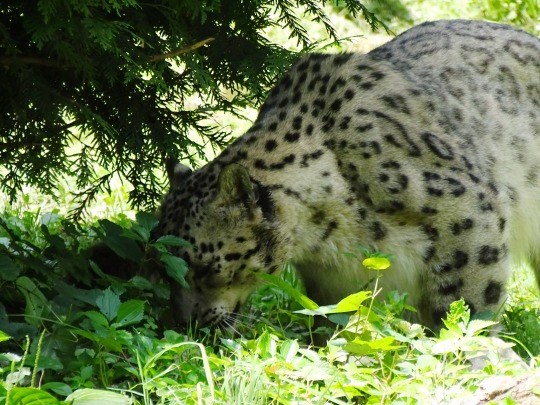
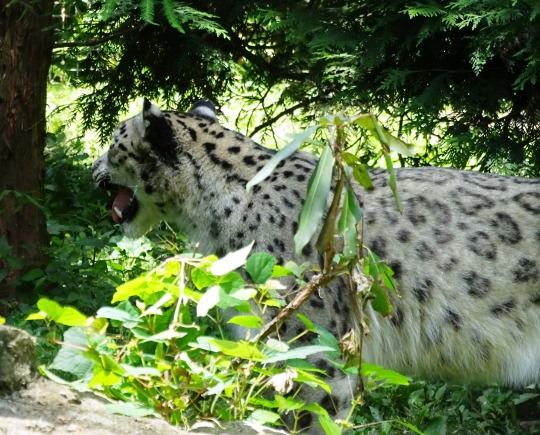


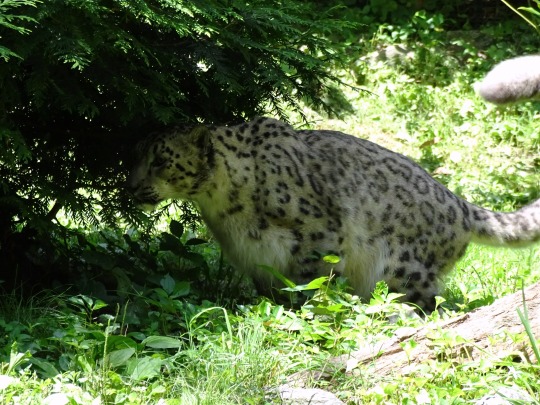





International Snow Leopard Day
Snow Leopards are captivating and powerful animals. However, they are also vulnerable to loss of prey and poaching. These animals are distributed sparsely across 12 different countries in Central Asia. They tend to be found in rugged, high mountain landscapes, at elevations between 3,000 and 4,500m. The key to protecting this species is raising awareness. That’s what International Snow Leopard Day is all about.
History Of International Snow Leopard Day
The first International Snow Leopard Day occurred on the 23rd of October in 2014. The main purpose of this day is to show the importance of snow leopard conservation and raise awareness about this incredible animal. The day also emphasizes the importance of taking measures to stop poaching, as well as consolidating efforts in terms of an environmental organization in the countries of the snow leopard range.
The day was initiated by the countries that encompass the snow leopard’s range. They include Uzbekistan, Tajikistan, Russia, Pakistan, Mongolia, Kyrgyzstan, Kazakhstan, India, China, Bhutan, and Afganistan. On the 23rd of October, in 2013, these countries signed the Bishkek Declaration regarding the conservation of the snow leopard. This happened in the capital of Kyrgyzstan, Bishkek, at the very first Global Snow Leopard Forum.
Fascinating Facts About Snow Leopards
Snow leopards are able to prey on animals that are up to three times their own body weight.
They have massive, thick tails, which are able to help them maintain balance and shield them from harsh weather. Their tails are almost as long as their entire body.
A study from the WWF has recorded snow leopards living at 5,859 meters above sea level. This is the highest altitude that has ever been documented for big cats. This is about the same height as the highest mountain in Canada.
You may be surprised to learn that snow leopards are not able to roar. Instead, they mew, yowl, and growl. They also prusten, which is also known as chuffing. This is a non-threatening vocalization, which is made when they blow air through their nose.
The fur on the stomach of a snow leopard is almost five inches thick. This is so that they can survive in the harsh and cold mountain climates.
These animals are often referred to as ‘ghosts of the mountain’ because they spend most of their lives in solitude and they are rarely seen.
Snow leopards are the only big cats that call Asia’s cold deserts their home. These deserts are sometimes referred to as the third pole because they feature ice fields with the biggest reserves of freshwater outside of the southern and northern polar regions.
What Threats Do Snow Leopards Face?
The exact number of snow leopards is unknown. Experts believe that there is no more than 6,390 snow leopards around the world, yet the number could be as small as 3,920. There are a number of threats that this elusive cat faces, including poaching. Data is hard to come by in this respect because a lot of trades with snow leopard parts occur in the dark. Some research shows that one snow leopard has been killed and traded every day between 2008 and 2016. However, the true extent of the issue is thought to be even bigger.
No animal should be poached, and this is why the likes of International Snow Leopard Day are so important so that we can raise awareness about the issue. Poaching is also a problem because it takes away resources for the snow leopard. The main prey species for the snow leopard are wild goat and sheep. However, these species are also threatened by unsustainable or illegal hunting in a lot of the parts of the snow leopard range. So, if there is a decline in their populations, there is also going to be a decline in the population of the snow leopard.
Snow leopards face a number of other threats that a lot of people don’t consider. For example, their mountain ecosystem could be destroyed because of large-scale developments, including mining. Climate change also poses a number of challenges as well. Temperatures are increasing in the mountains across Central Asia. This has an impact on the entire ecosystem; from water supplies to vegetation. It is certainly worrying times for snow leopards, and a good way to spend International Snow Leopard Day is by educating yourself fully on the issues these animals face.
How To Observe International Snow Leopard Day
There are a number of different ways that you can support International Snow Leopard Day. So, here are some suggestions…
Learn and explore – One of the best ways to observe International Snow Leopard Day is to learn about this incredible creature. Spend some time reading up on the snow leopard. Find out about where the animal lives, what threats they face, and what steps we can take in order to help safeguard the future of this incredible animal.
Get creative – Another way to show your support is to get creative. There are some activities online involving the snow leopard. You can find a fun activity sheet via the WWF website.
Order a WWF Explore Badge – Another way to show your support for International Snow Leopard Day is to order a WWF Badge. This is something else that you can get on the WWF website.
Adopt a snow leopard – You can also support snow leopards by adopting one. This helps the WWF to monitor snow leopard movements, by giving local communities the support needed to do this, as well as reducing human snow leopard conflicts.
Fundraise – You may also decide to host a fundraising event. This is a great way to raise awareness about the problems that snow leopards face while also accumulating donations that can go towards helping them. There are so many different ways that you can fundraise. You may decide to host a fundraising event, such as a cook-off, bake sale, or fun run. Another option is to make products that you can sell and then you could donate the proceeds or a percentage of them to helping snow leopards.
Source
#International Snow Leopard Day#23 October#Bronx Zoo#New York City#USA#summer 2019#original photography#InternationalSnowLeopardDay#outdoors#animal#flora#fauna#shy animal#tourist attraction#landmark#cityscape#nature#vacation#travel#world day
9 notes
·
View notes
Photo

Altai Tavan Bogd mountain massif in Mongolia near the triple border with China and Russia. Its highest peak, the Khüiten Peak, is the highest point in Mongolia at 4374 meters above sea level.
photo by legendary Erdenebulgan (https://www.instagram.com/erdenebulgan_photographer/?hl=en)
11 notes
·
View notes
Text
Unusual Attractions in Mongolia
Unusual Attractions in Mongolia
Are you planning to visit Mongolia soon? Here’s the list of 8 Unusual Attractions in Mongolia based on my experience of visiting this beautiful country.
Mongolia is yet another landlocked country in Central Asia. It is also one of the highest countries in the world with an average altitude of 1,580 meters above sea level. Surrounded by mountains, half of the population are known to be nomads…

View On WordPress
1 note
·
View note
Photo

The Muztagh
People who read Books about old explorations in the Western Himalayas and Karakoram and the Hindu Kush come across a term quite often “Muztagh”. The first time I read this name, and though I was unaware of the meaning I knew it was a strong word. For a long time Muztagh was the name given to the almost impenetrable wall of Mountains which separate Kashmir from Central Asia. An of course with everything in Central Asia the word has Turkic origins.
Muztagh is made up of two words : Muz/ Buz which means Ice and Tagh/Dagh which means Mountain. So it means Ice Mountain which is similar to the word Himalayas which gets its from Sanskrit words Him meaning Snow and Alaya which means home. To the Ancients in India any Mountain which was permanently Snow covered was a Himalaya and in the same way the word Muztagh was the term used by the Turkic people to describe any Mountain that was permanently covered with Snow. Simple implication is that Snow covered Mountains always had a certain degree of reverential awe attached to them and it is no wonder that in may beliefs the Mountains were supposed to be the place the Gods resided.
The Karakoram was for the longest time referred to as Muztagh. The Karakorams because of their perpendicularity are the most impenetrable Mountain Ranges in the World and the people never went into them and there is simply no inhabitation. That's why it took Westerners to actually figure out that K2 was the second highest Mountain in the World. To the locals (as in the people living closest to the K2) it was simply a Muztagh out of many Muztaghs. And to them any Mountain in any direction was simply a Muztagh. They didn't really care if it was the Karakorams, the Himalayas, the Hindu Kush or the Pamirs. And this is unlike say in Nepal where the Everest was known as the Sagarmatha or “The Goddess of the Sky’ and the Tibetans called it the Chomolungma or the Holy Mother.
And as of today the term Muztagh is still in use for some Mighty Peaks in the Karakorams, in the Pamirs and even on the Northern edge of the Tibetan Plateau near Mongolia. And it was also the name of a very famous Pass which connected Baltistan with Central Asia made famous by Francis Younghusband who came down from Central Asia into Baltistan via the Mustagh Pass. Infact Younghusband identified two Passes as the Muztagh pass. One was the Old Muztagh Pass and the other was the New Muztagh Pass. Both Passes were well over 5000 m and were on the watershed between the Tarim Basin to the North and the Indus Basin to the South. The Muztagh Pass was the shortest Route between Skardu and Yarkand and by extension the shortest Route between Kashmir / Punjab and Central Asia and was a part of the Silk Route in those days. The Pass had gradually been abandoned as it became treacherous to cross due to Glacial movements.
And now coming to the Mighty mountains that carry the Muztagh name. The mightiest is of them all and one of my favourite Mountains is the Muztagh Ata. Not only is it a “Muztagh” but its an “Ata”. Ata is the Turkic word for Father/ Ancestor. So Muztagh Ata means the Ice Mountain Father. At 7509 m it is one of the highest Peaks in Central Asia and though regarded as a part of the Kun Lun Range by some it is considered a part of the “Eastern Pamirs” by most. Whatever Range its classified in it is a majestic Mountain and said to be one of the few 7000+ m Peaks which is considered easier to climb than most other Peaks of that classification. And as per one scholar the Rig Veda also mentions a Mountain called Mujavant from where the best Soma came from and he is certain that the Mountain in question is none other than the Muztagh Ata. Interesting to say the least.
Now we come to another interesting Mountain called the Muztagh Tower which is in the Baltoro Range of the Karakorams. This Tower shaped Mountain was first immortalized on film by none other than Vittoria Sella who took a picture of this impressive Peak. At 7276 m it just great justice to its status as a Muztagh. Infact the pic of the Muztagh Tower was used in some Book where it was titled simply as the “Last Citadel” and it is almost one. The “Last Citadel” was climbed in 1956 when Sella’s pic set off a race between two separate teams of Mountaineers.
And the most isolated Muztagh. The “Great” Muztagh or the Ulugh Muztagh. The word Ulugh in Turkic stands for “Great”. This is an extremely remote Group of Mountains at the North of the Tibetan Plateau and its lies on the Northern front of the Kun Lun Mountains. For a long time the elevation of this Mountain was said to be 7700m plus but in 1985 using modern equipment the height was measured to be 6973 m but didnt do anything to take from the Ulugh part. It still is unclimbed and it is said that many Expeditions have even failed to reach the base of the Mountain due to its remoteness and due to the fact that driving to the Mountain involves going through terrain of between 4000 m to 5000 m. And it is a beautiful Mountain. Doing great justice to the Muztagh part as well.
And lastly even today the Karakorams are sometimes referred to as the Karakoram Muztagh or even Muztagh. Infact Eric Shipton mentions that once upon a time there were certain Scholars who wanted the Karakorams to be re-named as the Muztagh. But that didnt really happen but even today the sub Ranges of the Karakoram carry the Muztagh title. Some of these Muztagh sub Ranges of the Karakorams is as under
Baltoro Muztagh
Batura Muztagh
Hispar Muztagh
Panmah Muztagh
Rimo Muztagh
Sasser Muztagh
Siachen
And from the Khardung La you can seet the Sasser Muztagh (also known as Saser Kangri as Kangri is the Tibetan word for a Mountain) as seen from the Khardung La. At 7672 m it does great justice to its title as a Muztagh. And once you are done with with your selfies at the superlative sign boards at the top take a look North. And when you spot the Saser Muztagh just bow down. A little. You just saw a Muztagh.
Leaving you with a pic of the Muztagh Ata.
Pic from 2018. Summers
4 notes
·
View notes
Photo

Mönkh Saridag, the highest peak in the Sayan Mountains at 3,941m. It is situated on the international border between Mongolia and Russia.
#geography#geology#mongolia#russia#khövsgöl province#russian far east#buryatia#sayan mountains#mönkh saridag#mountains
88 notes
·
View notes